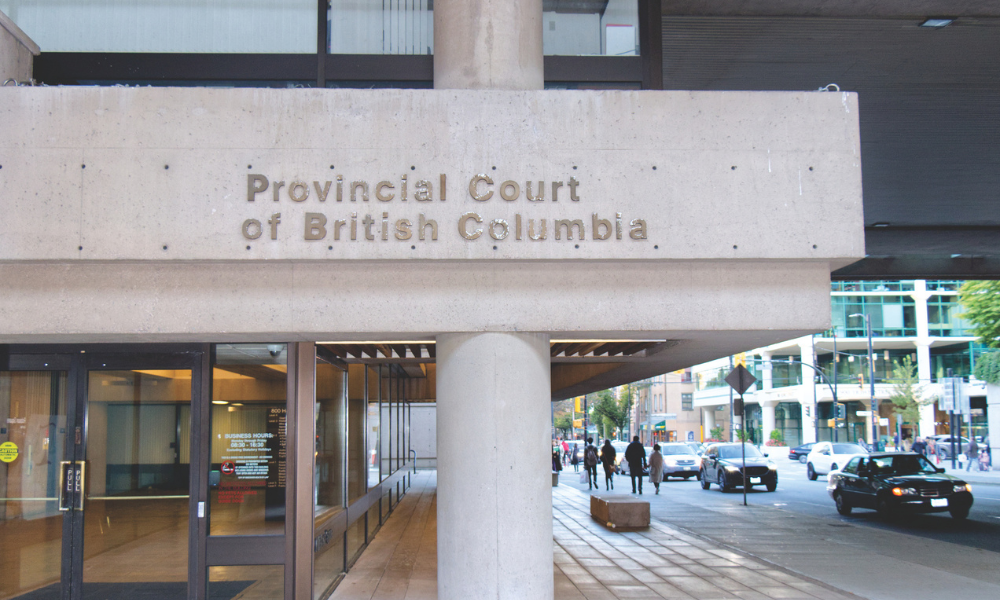Application for access was made before discontinuance was filed; court split 5/4 in its decision

In a 5/4 decision that relied on the “highly technical” language of Quebec’s Civil Code of Procedure, the Supreme Court of Canada has dismissed an application by a media outlet to access court records.
“The majority interpretation is the fine print in an insurance contract,” says Roger McConchie, a partner in McConchie Law in Vancouver; “a highly technical interpretation based on a literal meaning of the rules and … of the case law relating to the discontinuance of proceedings.”
In MediaQMI inc. v. Kamel, the Supreme Court found that the appellant media company could not access court documents that had been filed, and then removed, from a civil lawsuit once proceedings ended.
Also of note in the case was that two of the three Quebec judges on the high court – Chief Justice Richard Wagner and Justice Nicholas Kasirer -- were in dissent on the judgment; reasons for the majority were penned by Justice Suzanne Côté.
In her reasons, Justice Côté found that since the statute regarding access to court exhibits under the Code of Civil Procedure were clear, there was no need to interpret it to make it consistent with the Charter.
The judgment enforces the concept that the plaintiff (in this case, the respondent) is dominus litis, or master of their suit, and while a third party can have access to a file or exhibit, “they have to take access with what is in it at the time they are looking in it” and not after proceedings have ended, says Jonathan Pierre-Étienne, a partner in Grondin Savarese Legal inc. in Montreal and lead counsel for the respondent in the case. This gives a party a greater sense of control and privacy over their files, he says.
Applying the Code of Civil Procedure strictly as it does, the decision provides “a good base … for the lawyers of Quebec,” Pierre-Étienne says, and reaffirms “the guiding principles of civil procedure,” says Antoun Alsaoub, who was co-counsel the respondent, highlighting applicable articles in the Code.
This includes Article 108, which states in part that:
108. The parties and the lawyers, or in non-contentious proceedings, the notaries representing the parties, must see to it that exhibits and other documents that contain identifying particulars generally held to be confidential are filed in a form that protects the confidentiality of the information.
Any document or real evidence that is filed in the record as an exhibit must remain in the record until the end of the proceeding, unless all the parties consent to its being removed. Once the proceeding has ended, the parties must retrieve the exhibits they have filed; otherwise, the court clerk may destroy them one year after the date on which the judgment becomes final or the date of the pleading terminating the proceeding. In either case, the chief justice or chief judge, if of the opinion that the exhibits can still be useful, may stay their destruction. [emphasis added]
In this case the company MediaQMI Inc., which publishes the Journal de Montréal newspaper, wanted to publish details about a case involving the respondent, Magdi Kamel, and his former employer, the Centre intégré universitaire de santé et de services sociaux de l’Ouest‑de‑l’Île‑de‑Montréal. The CIUSSS had sued Kamel, then a manager, for misappropriation of funds, claiming that Kamel had channelled it into four bank accounts over several years. The Quebec Superior Court agreed to order the identification of the bank account holder or holders, but ordered that the entire court record be sealed.
MediaQMI asked the Superior Court to unseal the documents so it could access the court record and its exhibits; however, before a judge could decide that issue the CIUSSS dropped its lawsuit, and both plaintiff and defendant then sought to retrieve their documents from the court record. MediaQMI objected to the CIUSSS’s efforts to remove its exhibits, and the Superior Court judge who ruled on the matter ordered the unsealing of the court records, but said that because the lawsuit had ended the parties could retrieve their exhibits and shield them from the public.
MediaQMI appealed to the Quebec Court of Appeal and lost -- and lost again before the Supreme Court.
“The fly in the ointment of the majority's analysis here, I think, has to do with the fact that the application for access by the media was made before the discontinuance was filed,” says McConchie.
“What do you do if you're a media applicant now, given this decision? Do you have to apply -- ex parte or on abbreviated notice -- for a special, additional ancillary order that no party be allowed to take a step in the action, including terminating it, until your motion’s been disposed of?
“And do you have to couple that with some sort of application under the Charter, giving rise to a constitutional challenge to any technical rules, like the discontinuance rule, that might be employed to frustrate it?”
In dissenting reasons, Chief Justice Wagner and Justice Kasirer, also writing for Justices Malcolm Rowe and Sheilah Martin, found the case should have been sent back to the Superior Court to be decided on the basis of the analytical framework established in Dagenais and Mentuck.
“A court seized of an application under art. 12 C.C.P. to limit the openness of court proceedings must exercise its discretion in accordance with the analytical framework developed in Dagenais, Mentuck and Sierra Club, even if the application is unopposed,” the dissenting justices wrote.
The minority judgment “in my view more effectively captures the intent of the open court principle,” McConchie adds, “which I think is such a fundamental principle it shouldn't be overthrown and essentially ignored, displaced by a highly technical read.”
In this case, the application for access was made before the discontinuance as filed, and the minority judgement “makes a lot more sense, given the importance of the open court principle,” he says.
“I think an overly technical approach which sees it booted out the door based on statutory language is not the right approach. … What’s needed is an expansive view of the application of the open court principle.”
The Supreme Court will release another decision regarding accessing court records in Estate of Bernard Sherman and the Trustees of the Estate, et al. v. Kevin Donovan, et al. this Friday. At issue in that case is the test for limiting public access to court records. In what will be a closely watched media challenge, a reporter for the Toronto Star newspaper has challenged a sealing order of court records regarding the estate of Bernard Sherman, the billionaire businessman who, with his wife, was murdered in Toronto in December 2017.










